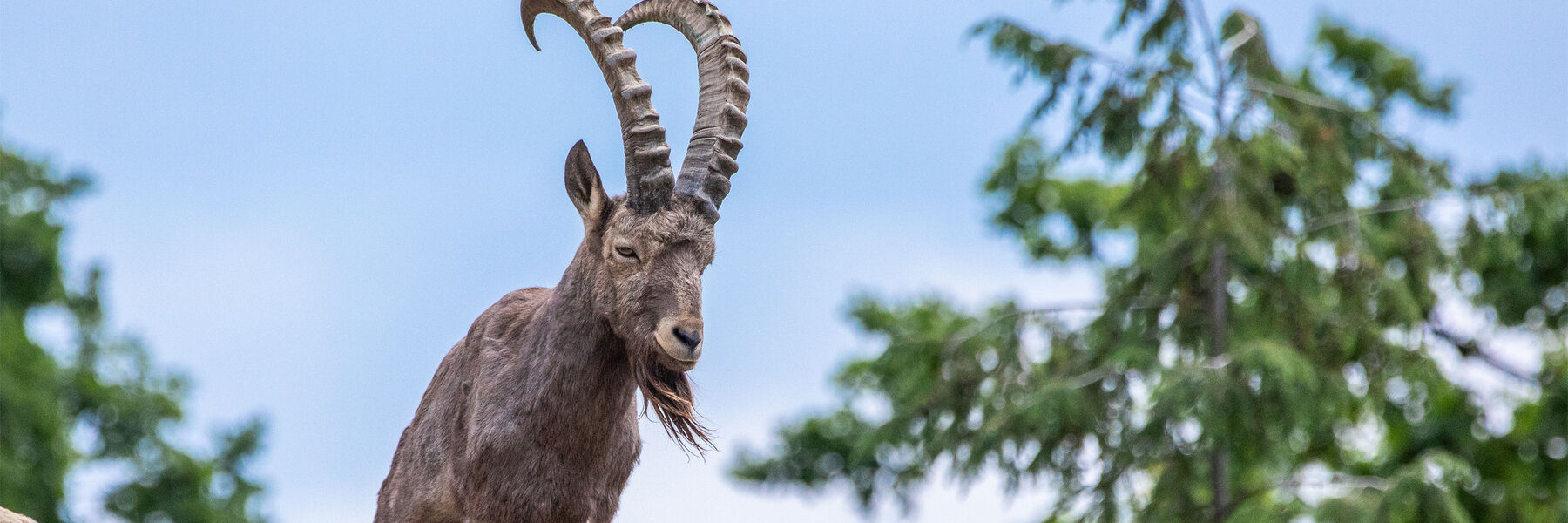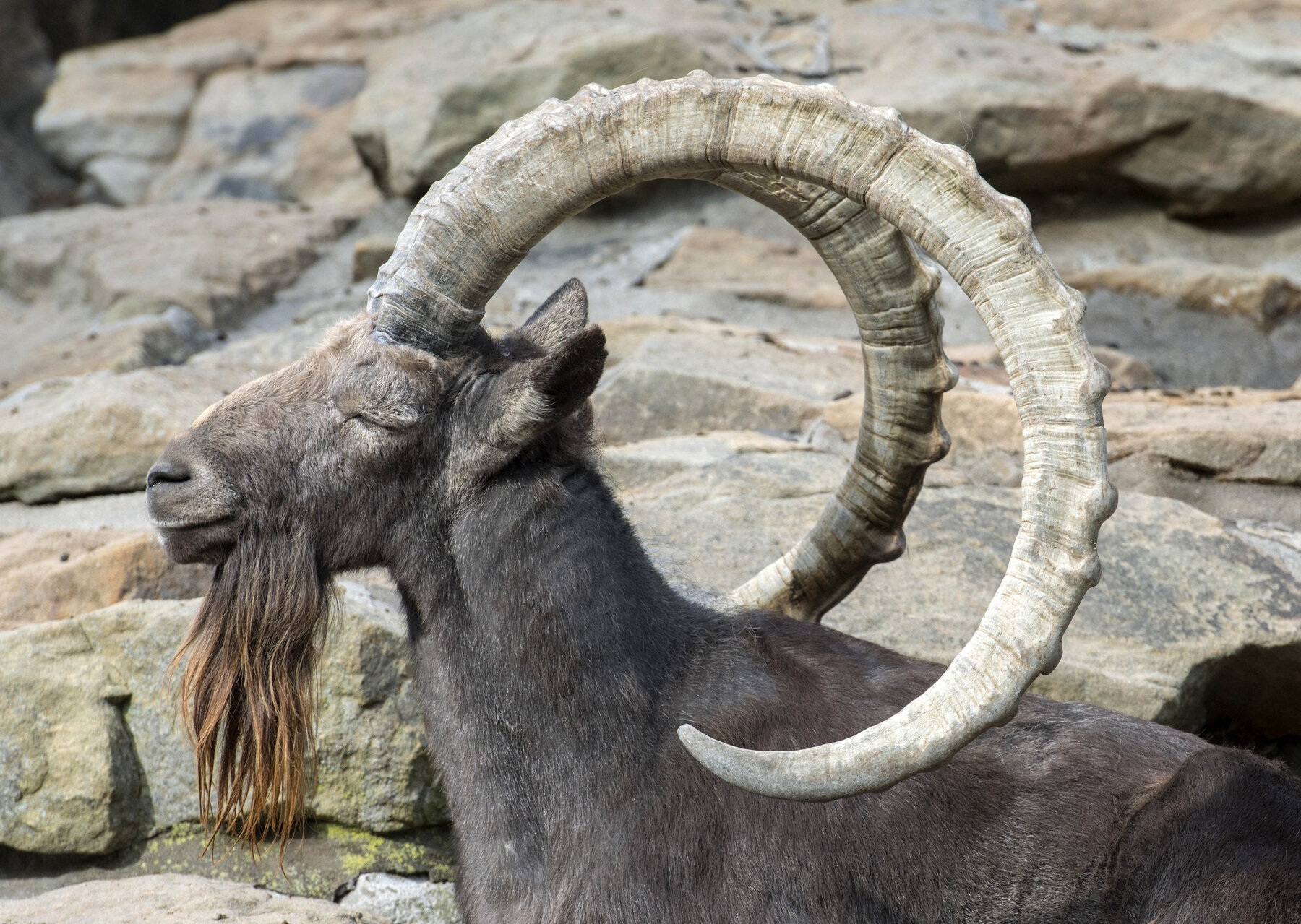
Siberian Ibex
Capra sibirica
Both sexes of the Siberian ibex have horns. The females’ horns are relatively small and bent backwards, while the males’ imposing horns can grow up to one meter long. They continue to grow all throughout their lives and are not shed like antlers.
Gender segregation
Females stay pregnant for five to six months and give birth to one, or more rarely, two babies. The kids have a very thick fur, which provides excellent protection from the cold. The females live with their offspring in herds of up to 20 animals. Male ibexes form bachelor groups or live in solitude.
Characteristics
- Origin
Central Asia
- Habitat
mountain ranges, up to 5,000 metres above sea level
- Diet
Siberian ibex feed on grass, herbaceous plants, mosses, lichens, young shoots, and buds.
- Status
least concern
- Size
Up to 110 cm (shoulder height)
- Weight
The weight ranges from 35 to 130 kg, females are significantly lighter than males.
- Gestation period
5 to 6 months
- Achievable age
up to 15 years in the wild, up to 20 years in human care
Threat Categories of IUCN



